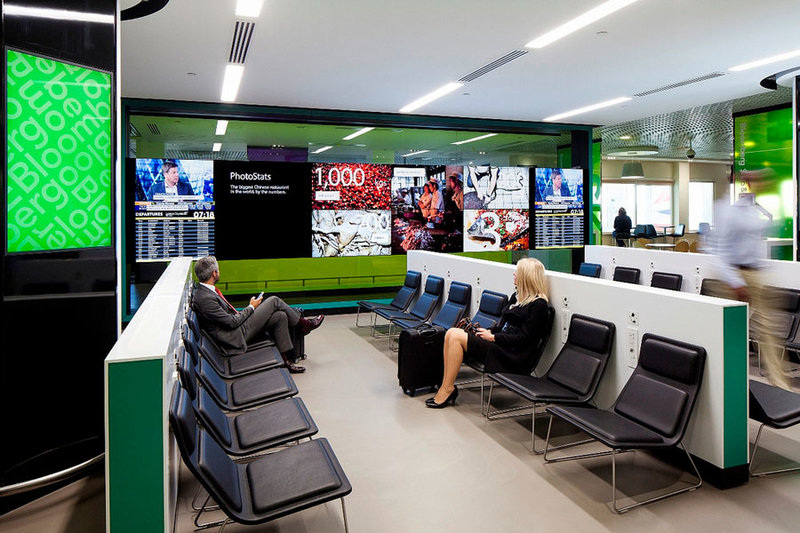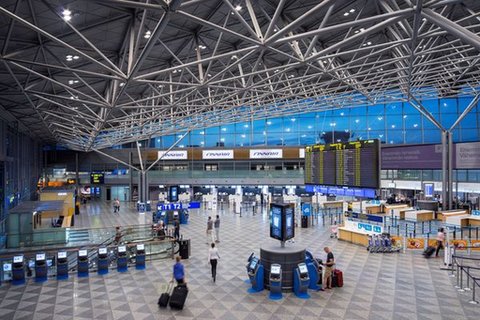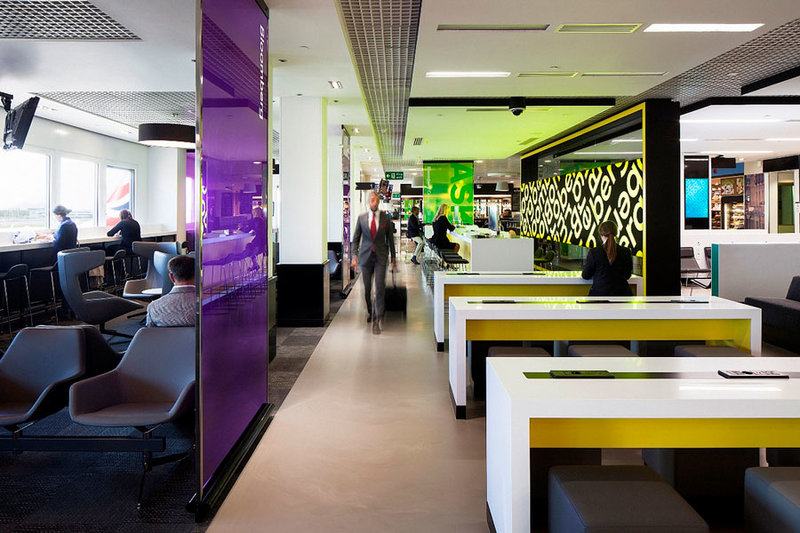Operations
Shhhh:
is the day of the airport announcer over?
In recent years many airports have opted to become “silent airports”, where public address announcements are replaced by alternative communication methods. Are quiet airports the way forward and how have passengers reacted? Frances Marcellin finds out
O
ver the last ten years there has been a growing trend towards airports becoming “silent airports”. Usually this means that public announcements throughout airport terminals will cease to exist, but in most cases emergency announcements and those at the gate are still permitted.
“A silent airport is about creating a calm, relaxed ambiance without being disrupted by unnecessary airport announcements,” explains Antoine Rostworowski, deputy director general, programmes and services, at ACI World. A non-profit organisation representing airports all over the world, ACI World serves 641 members in 1,953 airports across 176 countries.
“It does not necessarily mean having no announcements at all, but it aims at greatly reducing or eliminating the number and frequency of general announcements in most parts of an airport,” he says.
“In a busy airport environment, where there is already a lot of hubbub, being able to reduce non-essential noise greatly contributes to creating a calmer experience and a more relaxed atmosphere for passengers.
Image courtesy: Something / Example.com
Mixed public reaction to “silent airports”
Although there are no official figures, more and more airports are implementing “silent airport” policies.
In May last year, Chennai Airport became one of the latest airports to adopt the strategy, which meant that boarding announcements would no longer be broadcast. Notifying a change in boarding time, baggage delivery or other similar aspects are carried out through the airline by SMS, although limited announcements are permitted if there is a change of boarding gates.
Changi Airport followed suit in December, but when the news was announced on The Straits Times’s Facebook page, an English-language daily newspaper based in Singapore, many of the comments left by readers were negative.

Eero Knuutila is head of service development at Helsinki Airport.
Image credit: Helsinki Airport
“Why, to what benefit?” remarked Facebook user Tom Holladay. “You have plenty of people in and visiting Singapore who need help making their flights, servants, guest workers, visitors, the elderly. An occasional announcement does not hurt anybody.”
Reader Min Yong Wong wrote: “Down right stupid – if more people miss their flights then it will backfire on them.”
Yet some Facebook users, like Kent Tay, responded positively: “It is the passengers [sic] responsibility to keep track of their own boarding time.”
Gina Tok commented: “It’s a good practice that passengers adopt the system. Unless emergencies arises [sic] of delay, change of gates etc!”
Although the change can cause disruption at the beginning, once passengers are aware that the system is in place and become familiar with it, often the result is positive.
In May last year, Chennai Airport became one of the latest airports to adopt the strategy
“Silent airport” success at London City Airport
London City Airport adopted the policy a decade ago. “From 2008, the airport implemented a ‘silent terminal’ policy, which means only essential announcements are delivered via the public-address system,” explains Melanie Burnley, director of customer experience at London City Airport. “This is well-received by passengers, who, in a recent customer feedback survey, scored the airport favourably for the terminal environment and noise.”

London City Airport adopted a “silent terminal” policy in 2008.
Image credit: London City Airport
Burnley says that the increased adoption of smartphones has helped to embed this policy and that the airport now offers real-time flight information via Facebook Messenger and Twitter, which sends updates on gate and departure information direct to passengers’ devices.
She says there are still certain scenarios that require public announcements, such as gate changes at short notice, during disruption (when there are cancelled or delayed flights) and when there is a flight information display failure.
The airport now offers real-time flight information via Facebook Messenger and Twitter
Passengers respond positively at Helsinki Airport
Helsinki Airport has been a silent airport since 2015. While there are no more flight and passenger announcements in the terminal, at the departure gate and when there is an emergency, announcements are still broadcast.
“We can improve the comfortability of the waiting areas and reduce the stress caused by travelling when we minimise the background noise and sense of hurry at the terminal,” says Eero Knuutila, head of service development at Helsinki Airport.

Helsinki Airport has been a silent airport since 2015.
Image credit: Helsinki Airport
In 2016, the airport conducted a study to find out what passengers thought of the change and how it impacted their travel experience. “The conclusion of the study was that people found the concept more positive than neutral, and that people considered it to lower stress levels and improve the overall ambience of the airport,” Knuutila says.
The study also investigated whether people considered that finding their way to the gate in time became increasingly difficult without the announcements.
“These results were neutral,” he adds, “and thus do not imply that wayfinding would have become more difficult, as opposed to some other viewpoints presented within the industry.”
People considered it to lower stress levels and improve the overall ambience of the airport
Technology reduces need for announcements
For passengers to manage their airport experience efficiently, and to be able to navigate through the airport without a problem, an airport needs to be set up effectively so the “silent airport” strategy runs smoothly.
The widespread adoption of smartphones – worldwide mobile phone users reached 2.73 billion in 2017 and 87.4% use a smartphone for internet access, according to eMarketer – means that mobile technology can support the transition to a “silent airport” status.
“The use of technologies can greatly contribute to airports in reducing the number of announcements,” says Rostworowski, adding that the availability of technology means that announcements may only be used in times of crisis and emergencies. “In some airports, passengers are requested to use the airport’s displays or electronic devices to obtain information about their journey.”

Antoine Rostworowski, deputy director general, programmes and services, at ACI World.
Image credit: ACI World
If airports undertake a digital transformation, they can implement processes and services to deliver a better experience to customers, he says, and that it can be done by integrating new technologies with existing ones.
“From the viewpoint of the passenger, a better experience means a more pleasant and personalised individual approach,” says Rostworowski, adding that passengers now expect to have a choice in the way they gather information. “Today’s digital devices bring this personalised information directly to the customer, thanks to mobile applications which allow them to track flight information and changes and provide dynamic wayfinding in the airport.”
Mobile technology can support the transition to a “silent airport” status
Preparation is key for a smooth transition
Yet to avoid pitfalls, he warns that airports need to understand the entirety of their operating environment and their passenger profiles before rolling out a new technological change.
One of the ways in which ACI World supports its members is by providing industry knowledge and assistance that can support the decision-making process. The organisation released the report ‘Airport Digital Transformation Best Practice’ to guide airport mangers through the best-practice decision-making, Rostworowski explains, and covers areas such as internal readiness, risks and enabling technologies.
At Helsinki Airport, banners have been added underneath Flight Information Displays and monitors informing passengers there will be fewer announcements and alerting them to the fact that they need to keep track of time.

The increased adoption of smartphones has helped to embed the “silent terminal” policy at London City Airport.
Image credit: London City Airport
Knuutila says that they have explored new wayfinding systems that will help contribute to passengers’ stress relief. This also feeds into the airport’s strategy for offering relevant channels to passengers, such as map platforms and WeChat for Chinese passengers.
Helsinki Airport has also invested in a smartphone application and partners’ corresponding channels to increase passengers’ awareness of the location and available time. The airport uses simulation functionalities to estimate queue and walking times and feed it back to passengers.
“Personal digital channels used through smartphones is a major component of effective wayfinding,” adds Knuutila. “However, the key is to reach the passengers in the digital channels they are used to using.”
Personal digital channels used through smartphones is a major component of effective wayfinding